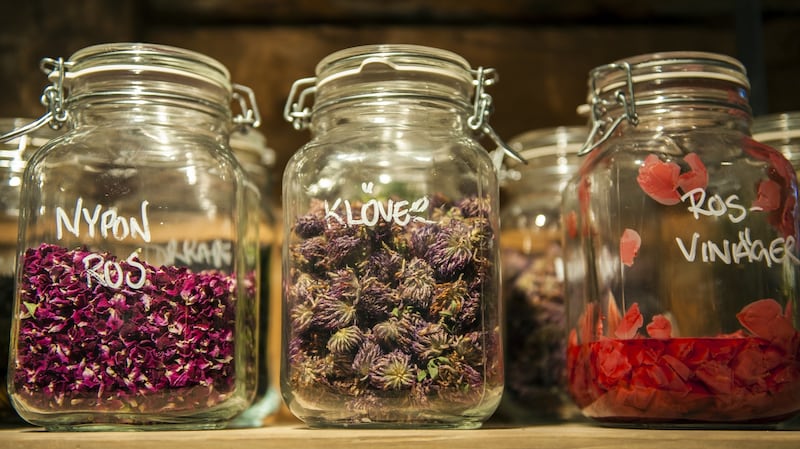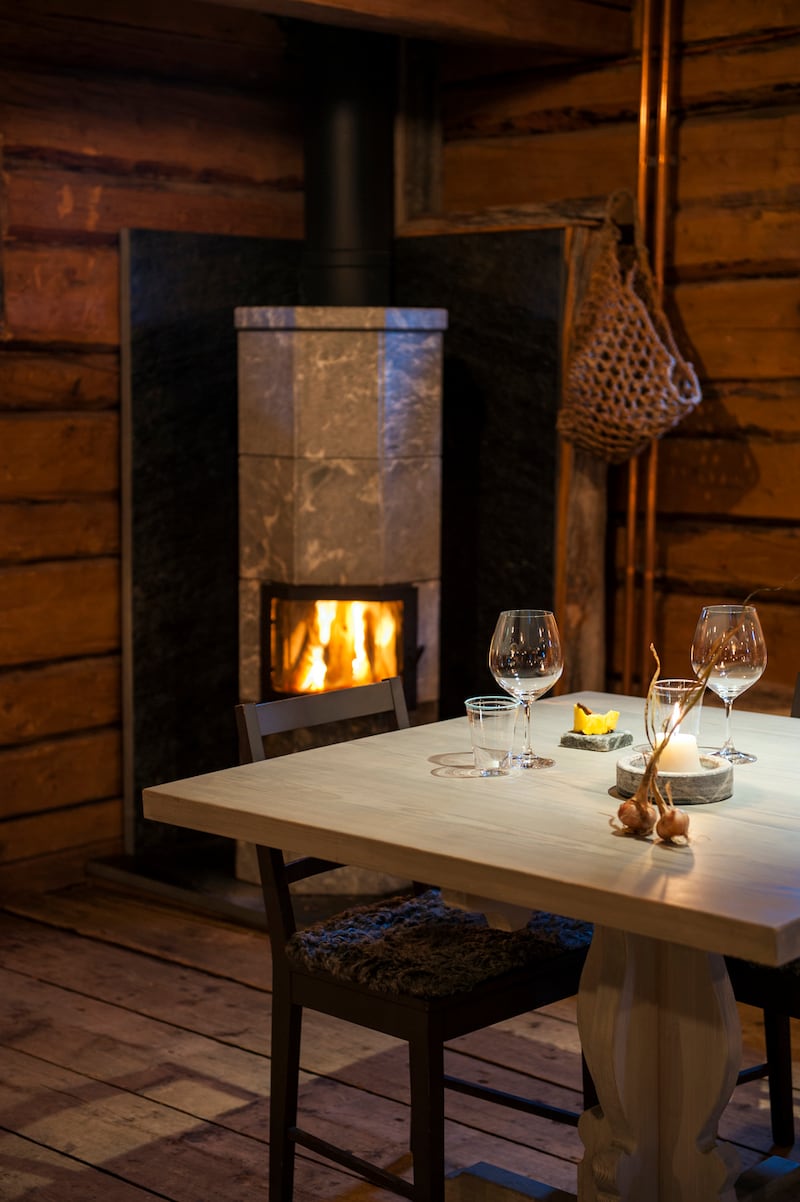Magnus Nilsson doesn't have a life-changing message to deliver at this year's Food on the Edge in Galway. Not yet anyway. When we speak, he hasn't figured out what he's going to say. He doesn't do the talking circuit much now. You get the impression he's over the thrill of standing in front of an audience and talking about his root store.
Nilsson is still boyish, bearded and long-haired, having put a restaurant at the end of the world on the map when he was just 24. Fäviken is in a vast estate in the Swedish province of Jämtland. Dinner involves a long trek through almost empty countryside, an overnight stay and a bill for the whole experience of more than €600 a head, if you opt for the wine. That's before you even book a flight.
Next year Nilsson will be 10 years in his domain. Although it’s “just a number”, that anniversary has prompted some reflection. You get the impression of a chef who is still excited about food but slightly jaded by the cult of chefs and frank about his early days of terrorising perfection out of his team.
We talk on Skype, Nilsson sitting in an office in front of a bookcase packed with files, an unromantic view of this fairytale place hinted at by the glitter of northern sunlight through a window beside his right shoulder. The heart of Nilsson’s food is preserving, pickling and storing supplies over winter when nothing grows in the snow and ice.
“It’s still the basic fundament of what we do. We never cease to learn about these things. There’s so much to discover still, I think, if you’re open to it,” he says. Travelling around and meeting people, you “stumble on knowledge”.

Nilsson grew up and trained as a chef in Jämtland and then worked in Paris, at Pascal Barbot's restaurant L'Astrance, for three years. He returned to Sweden and left cooking for the wine world because he hated spending his days trying to imitate Barbot's dishes. He arrived at Fäviken to help them with their wine list. When they couldn't find a head chef, he went back into the kitchen himself. Fäviken began with eight seats. Now there are 16 in the restaurant and a further eight at a communal table.
The restaurant’s isolation dictated the food. Nilsson turned his back on the world and began to dig where he stood. “For us that’s been so important. I often think about that how much harder it must be on some level – obviously each person running a restaurant has their own problems and upsides – but I often think about that how much harder it must be in a city where it must be inevitable to always compare yourself to the other restaurateurs.”
Tough to mellow
He had the freedom to create his own kingdom. Was he a kind ruler? “These days I’m pretty kind,” he grins.
Does that mean he has mellowed? “I would say so. I mean absolutely. I opened Fäviken when I was 24 – not mature for that task, looking back. It’s always easy to look back ... When you’re that age and you open a restaurant, all you want to do is cook and succeed and it’s not easy in the moment to always see what’s the best and most sustainable way of doing that.
“The fact is that you can claim that being very tough and very strict doesn’t work but that’s not true. In the short term it does work. If people are scared and pushed to their limits they will succeed in the short term. But the problem with that is that they don’t last very long, and it’s a very inhumane way of looking at staffing a restaurant and running a business.”
Now staff turnover among the 20-strong kitchen team is low. “For me that’s a good sign that we’ve succeeded in figuring out how to maintain precision and very low tolerance for failure but still in a humane way and also keeping people motivated, letting them grow and investing in people.”
Today no one in Fäviken works a double shift. The working week is 40 hours, with a maximum of 10 hours overtime on top. Interns are limited to 12 trainees a year. They come on a three-month programme, for which they pay Fäviken €1,200-€1,400 for training, room and board and some trips. Because he charges them, Nilsson says, his trainees are “much more motivated” and not just looking to add a well-known name to the CV.
Price doubled overnight
All of these changes came at a price not just to the trainees, and it was a dramatic one. Two years ago “we just doubled our prices, which was an insane decision to do, but we felt there was no other way”. The menu went from 1,700 Swedish krona (€177) to 3,000 (€312) “overnight”. Wine pairing is a further 1,750. A shared double room costs 2,500. That was what it cost to set the restaurant on a sustainable course, Nilsson says. And diners still queue up to pay. Why does he think people come to eat at Fäviken?
“Hopefully because they have a good time here.”

Is it an antidote to modern life? “I don’t think so. People are here for less than 24 hours. I think if we ran a place where you stayed for a long weekend or a week I think that would definitely be part of the reason people would come.”
Does he hate to see people photographing their plates? “I think that a lot of chefs do that today – ‘Oh, you can’t take photos of food’ – and I think that’s stupid. I mean why isn’t that part of the privilege that you pay for when you pay €500 to eat? To decide whether you want to document or not.”
Staff will tap someone on the shoulder “if we see that the eagerness to document affects adversely the experience of the diner, then we usually tell them, remind them about why they’re actually here. Because some people are so focused on documenting the experience and not having the experience, and that’s very sad.”
Opportunity to eat better
Does Nilsson see Swedish food culture improving thanks to his success? He says there is substantially better produce, especially vegetables, but that’s been the biggest change. “I think, generally speaking, people do not eat better today than they did 10 years ago. Those who are motivated, at least they have the opportunity today to eat better.”
But wasn’t the Nordic food movement supposed to save the world from bad diets and the environmental devastation of industrial food production when methods practised in these famous kitchens trickled down into real life?
“We’ve come to a point where chefs are supposed to have an opinion about everything and to deliver very wise standpoints on every subject matter imaginable, really, and you’re supposed to change the world. The truth of the matter is, a restaurant like Fäviken doesn’t really change the world on a greater scale. It can set an example. It can lead people in a certain direction, but that’s not, I mean – functions that decide how people eat is much much larger than that.”
Part of the problem is the bubble that chefs and foodie types inhabit where we “tend to mostly speak to ourselves”, Nilsson believes. So it can easily feel that people are eating better, “but it’s only the same people who did that 10 years ago who are already motivated.
“A lot of chefs and restaurateurs take on this sort of overcoat of world improvers and that’s the goal. The fact of the matter is that most of them can’t and most of them don’t do it for the right reasons, either. There are other reasons why you might want to do that. Obviously there are some amazing people who really make a change on a bigger scale but for me it’s like making the comparison between food and art. I hate the comparison with food and art, but in this case it’s adequate.”
Something very special
There’s the fine art painter who paints a beautiful landscape, he says “takes an inordinate amount of time, costs a lot of money, and materials are expensive and becomes something that’s completely nonessential for human survival. You still make it and it has a valid reason to exist, and there is also another painter who paints factories, like hectares and hectares of factory walls with the same paint and they’re equally important. They affect each other. To try to make the factory painter into a fine-art painter to paint all the factories in the same way is a very silly idea.

“A restaurant like Fäviken is an extreme anomaly. That’s not the way that people are supposed to eat on an everyday basis. In any way. No one does that. No one should do that. It should be something very special.”
So should chefs give up the narcissistic delusion that they have the power to find the big fix for the world’s food problems?
“No, absolutely not. But we should also be a little bit realistic about who does what and maybe make the world a better place by being better at the stuff that you master well and that you have a chance to actually control. And then lead by example rather than trying to do it the other way round and forcing a change that can’t be forced. Because everyone with half a brain sees that the current food system doesn’t really work, if you look especially at the farming side of things ... We have topsoil depletion, which is a scientific fact. We have global warming, which to a large extent comes from farming. And there are many other factors. And if a lot of people who are clever enough to see this as a problem still can’t make the change, why hasn’t this change already occurred on a larger scale?”
Food history has lessons in sustainability that Nilsson serves in his restaurant, like beef from former dairy cows. "The beef industry in northern climates it used to be, until the '50s, just a by-product of the dairy industry. No one had beef cattle. You had cows and then they became meat in the end." But he is wary of romanticising that past. "It's very easy to be passionate about these things and say 'Oh, we need to farm like we did 100 years ago. It's gonna be so much better,' but then it's like actually not because 100 years ago people were still starving across Europe. " The wunderkind has grown up.
- Food on the Edge takes place in Galway October 9th and 10th. See foodontheedge.ie for tickets and more details
















